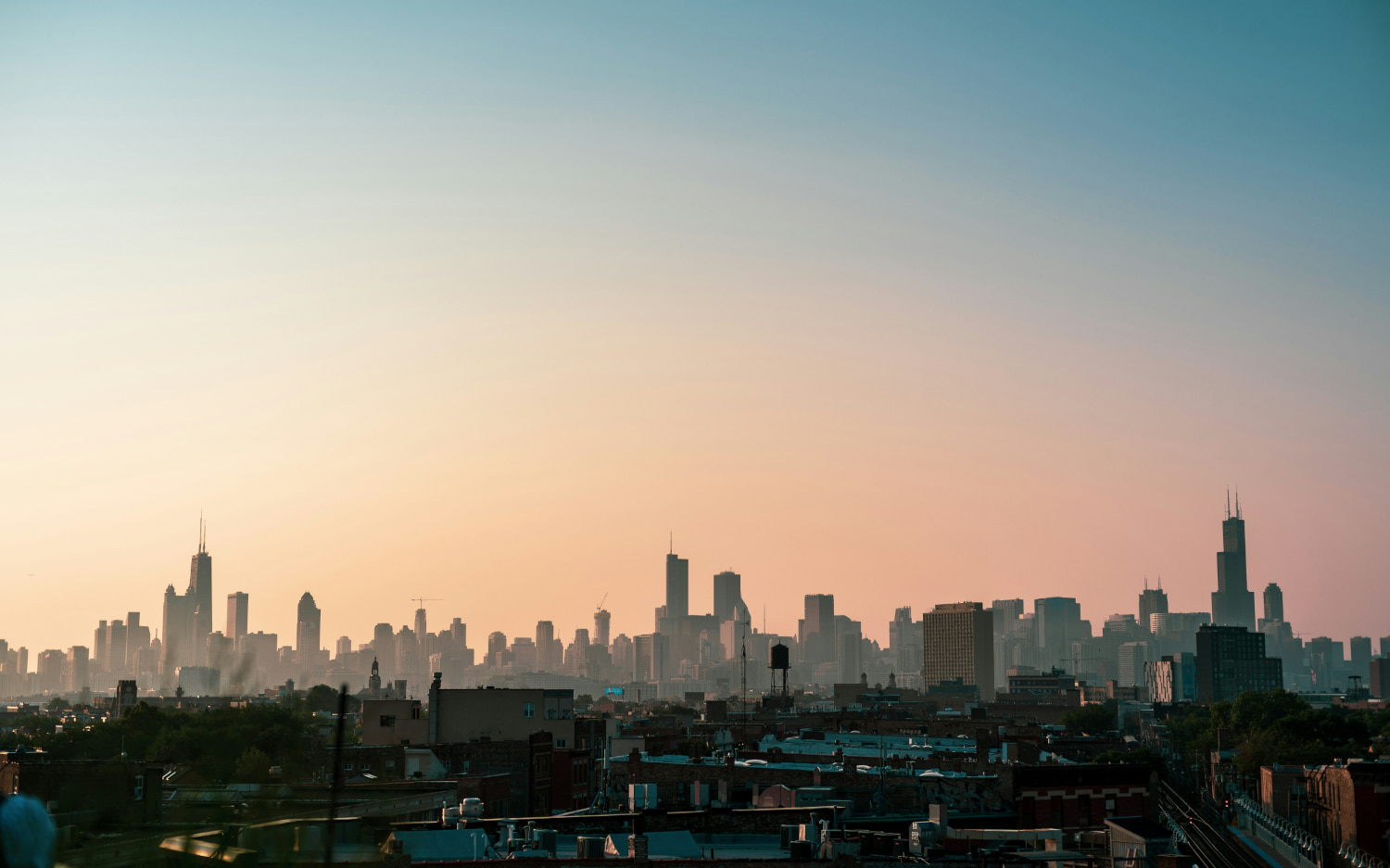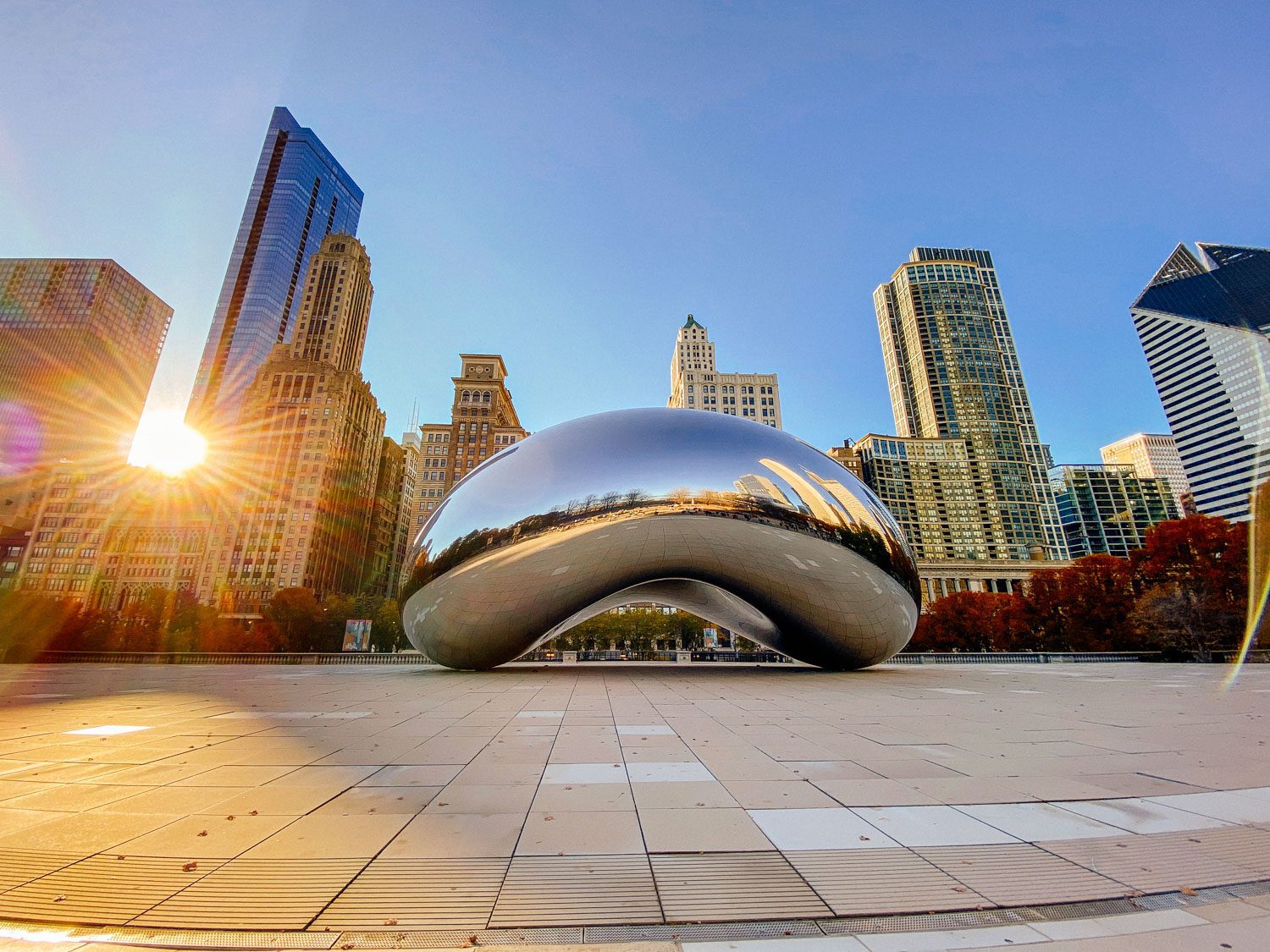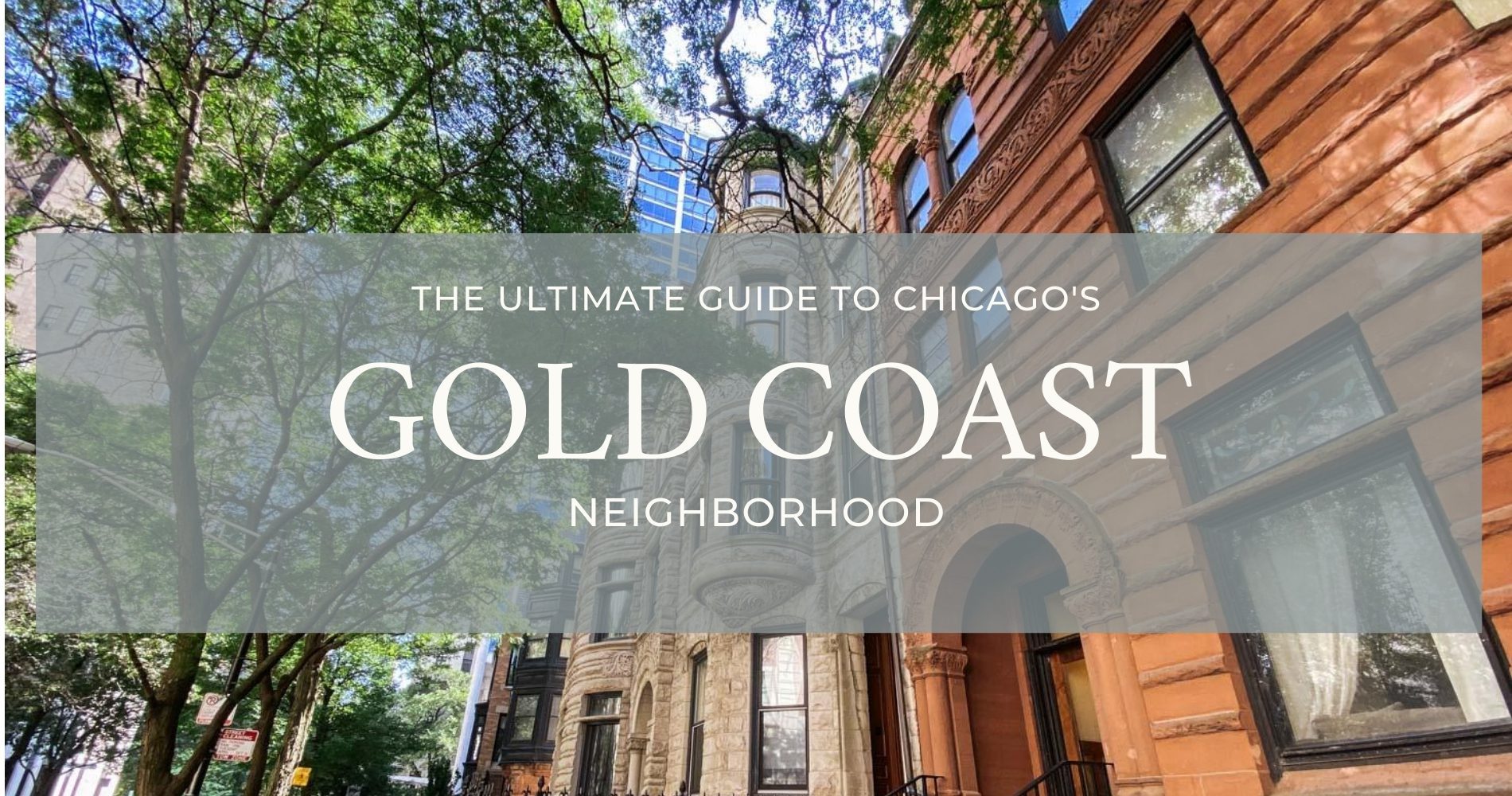The Ultimate Guide to Chicago’s South Loop Neighborhood

Table of Contents
By any measurement, the South Loop of Chicago has seen an impressive rebirth in the last 10 years. Let’s take a comprehensive look at this extensively revamped and reconstructed neighborhood that draws singles, couples and families who love its proximity to the water, a mix of downtown and traditional neighborhood feel and easy access to various forms of transportation.
South Loop Today

On the east side of South Loop is the Museum Campus, a 57-acre park and home to the Field Museum of Natural History, the Shedd Aquarium, and the Adler Planetarium. Museum Campus is also home to the Chicago Bears’ Soldier Field, where you can see Da Bears in all their glory, and to McCormick Place, an enormous convention center that hosts some of the country’s largest and most important trade shows and exhibits, including the Chicago Auto Show, the nation’s largest car show.
Grant Park, “Chicago’s Front Yard,” is literally your front yard when you live in the South Loop. Within Grant Park are multiple smaller parks and attractions that offer recreation, such as the Crown Fountain and Lurie Garden, skating in Maggie Daley Park, skateboarding and BMX biking in the Skate Park, sailing at the marina, jogging on the Lakefront Trail and music festivals at the Petrillo Music Shell.
Nature lovers enjoy South Loop’s proximity to Lake Michigan and Northerly Island, former home of Meigs Field, an airport which was controversially bulldozed in 2003 by former Chicago Mayor Richard Daley. The peninsula now hosts acres of beautiful grasslands with strolling paths and a magnificent view of the Chicago skyline.
Huntington Bank Pavilion, which is on the northern point of the island, is an outdoor amphitheater that hosts music concerts and offers unbeatable views of Lake Michigan, Soldier Field, and Burnham Harbor. If you love music and chilling out, grab a friend who has a boat and drop anchor just off Northerly Island. The venue is right on the water so you can hear your favorite band play while you bob up and down on the lake.
Printer’s Row, in the northern section of South Loop, is a neighborhood within a neighborhood, where former printing companies and paper pulp manufacturers’ historic brick and masonry offices are now renovated residences. Printer’s Row is also home to a burgeoning arts scene and its annual homage to books and printing, Lit Fest.
In recent years, residents looking for nightlife have come to Printer’s Row for a good meal or a cold draft, like Italian favorites from Sofi Restaurant, or Kasey’s, the second-oldest pub in Chicago, where you can enjoy a Bell’s Two Hearted Ale or a Deschutes Fresh Squeezed IPA.
South Loop’s vibrancy is impacted by its proximity to 22 colleges and universities in the Greater Loop area. As of 2014, these institutions enrolled 58,000 students annually and employed 14,000 people. Of these students, 28 percent stay in the Chicago area, and South Loop is becoming known as a great place for them to start a business or a family.
Currently, a development race is on in South Loop, which started in the late 1990s but was crushed by the economic crash of 2008, only to revive again recently. The goal of these developments is to provide residents with a place to work, live and recreate in close proximity to home.
One example is the new neighborhood, Southbank, a seven-acre community with five planned high-rise, multi-family apartment buildings and a two-acre park. The idea is to promote the regeneration of the Riverwalk, which will draw companies, restaurants, and retail to the area so the full, rich lives of residents will revolve around the neighborhood.

Needless to say, South Loop has a lot to offer, including business and financial opportunity, green space and recreation, music and arts, nightlife, football, family-friendly activities, and history. Its diversity and proximity to university campuses make it an ideal home for those who like a neighborhood with eclectic energy. Even though it’s growing, residents report that it maintains a mellow vibe and a neighborly feel. To top it all off, if you live in the South Loop, you get to tell folks you live by the only river in the world that flows backwards, the Chicago River.
History of South Loop
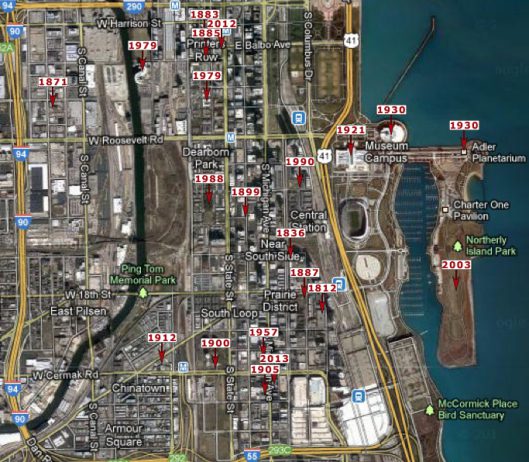
South Loop’s first heyday happened for the same reasons South Loop enjoys its current heyday: space for growth, business, jobs, nightlife and diverse society. Downtown Chicago was a magnet for manufacturing in the late 1800s. One steel mill after another popped up in the late 1870s to feed industry and the growth of the nation’s transportation system. Moving steel to the West Coast meant bringing in labor and sending out goods. People came to work tough jobs, including immigrants and laborers from Germany, Italy and Poland.
To accommodate trade from the East Coast to the West Coast through the city, railway depots were built just outside of town. Four stations sprung up within a mile and a half of each other: Dearborn, Grand Central, Central and LaSalle. The shape of the railroad lines gave the area its name, The Loop, and subsequently, the southern area became South Loop. The wealthy elite of Chicago built their suburban mansions there, including George Pullman of Pullman sleeping car fame and Marshall Field, who opened department stores where “the customer is always right.”
Things changed quickly. For two days in October of 1871, residents of South Loop got a front-row view of the Great Chicago Fire just over the Chicago River to the west. While the entire business district of Chicago was devastated, the South Loop grew as a result. Businesses sprang up overnight, especially the printing industry. Some industry was a bit sketchy, such as the brothels and saloons that kept the laborers happy in the evening hours, but it was an important development time in the neighborhood’s history.
Many of the marvels of architecture built during this period can still be seen today, including the Glessner House, which was built in 1887 and is now a museum. Though the exterior is Romanesque, the interior is all Arts and Crafts, cozy and warm. If you’re not hitched yet, keep the Glessner House in mind, as it’s one of the top 25 most beautiful places to get married in Chicago. In 1899, Libby Prison was converted to the third Chicago Coliseum, home of the Republican National Convention for 16 years until 1920.
Printer’s Row filled a two-block area between Congress Parkway and Polk Street at Dearborn in the northwest corner of South Loop in the late 1880s. Ink, pulp and paper, and printing press manufacturers supported printers like W.F. Hall Printing Company, Franklin Printing and famous mapmakers Rand McNally Co.

To the southeast, Motor Row was being made famous in the early 20th century. Michigan Avenue was home to a burgeoning auto market, with names known today like Buick, Cadillac, Ford, and Fiat, to names long past like Hudson and Pierce-Arrow. These gorgeous showrooms are now part of a landmark historic area including 56 buildings, some with fantastic brick and terra cotta exteriors.
Motor Row only houses one car dealership today, but a lively music and entertainment district has developed instead. In fact, some folks call this area Music Row, since it’s the home of Chess Records and the stomping grounds of Muddy Waters and Willie Dixon. Now, South Loop hosts Buddy Guy’s Legends, “the premier blues club in the world.”
To escape high rents in the Loop, Chinese merchants built a district of shops in Armour Square in 1912, which was named after famous meatpacking industrialist Philip Danforth Armour. Now known as Chinatown, the area borders South Loop to the southwest. Today, Sloopers (South Loopers) visit Chinatown to get delicious dim sum or to drink hot green tea in one of its many teahouses.
By the 1950s and 1960s, our beloved South Loop was hit hard by modernization. Interstate highways and the trucking industry killed the railroads, and huge offset presses created a need for larger spaces, causing many printers to build plants in the suburbs. Suddenly, Printer’s Row became vacant.
By the late ‘60s, South Loop was a shadow of its former glory. People commuted in for work and vacated by 5 p.m. According to Lois Wille, author of “At Home in the South Loop,” an overgrowth of office buildings and the demolition of the neighborhood, family-run shops and restaurants meant that people might work there, but they stopped living there.
The only people moving into the Loop moved into the northeast area, along the river and lakefront. In South Loop, people lived in poverty “in tiny cubicles in the flophouses and cheap hotels near those empty railroad tracks. Some of them, in fact, lived on the empty railroad tracks.” South Loop was down, but as you know, it wasn’t out.
A decade later, developers began taking a second look at South Loop and finding lots there to love with its proximity to downtown, museums, higher education, and Lake Michigan. Plans to revive South Loop as a residential neighborhood started to fall into place, and today, the area is thriving and growing, with new businesses and residential spaces opening constantly.

Northerly Island is no longer an airport, but an amazing place to commune with nature and enjoy music, a throwback to the famous architect and planner Daniel Burnham’s original vision for the island. Motor Row is slated to become the area’s entertainment hot spot and even a place to co-work.
In its approximate 140-year history, South Loop has morphed from sin to salvation, from goddess to beggar and back again. Today, the neighborhood is rising like a phoenix, but it is doing so with a reverence for its history. Historic publishing houses on Printer’s Row have been converted to apartments, and Dearborn Station has been converted to retail and office space.
We fully expect that when you visit South Loop, you will fall in love with its history, its vibrancy, and its neighborliness. The following sections will provide you with more specific information about the neighborhood, especially answers to the de rigueur questions such as where South Loop is located, what schools, parks, universities, and hospitals are nearby and what amenities are available.
South Loop Map
Apparently, no one knows where South Loop really begins or ends, not even its inhabitants. The City of Chicago reached out to residents in 1978 to define neighborhood boundaries, and this is the result for South Loop, which remains unofficial to this day:
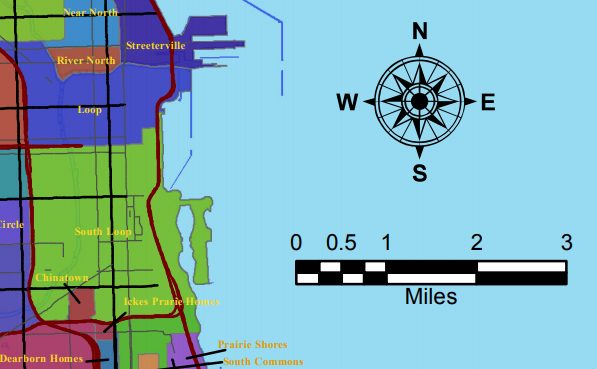
Residents were again asked in 2015 to draw the boundaries of South Loop, and the maps turned out like this:
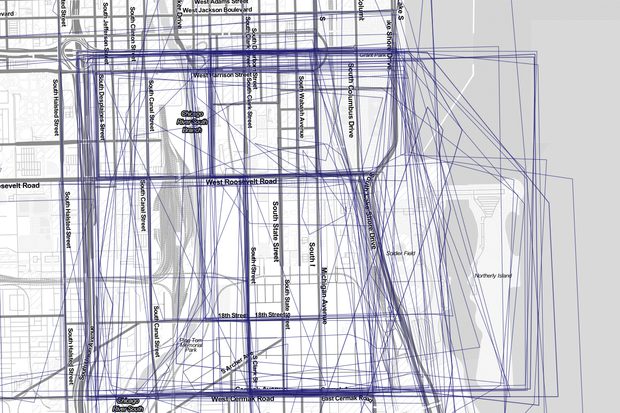
According to South Loop Living, a website dedicated to “celebrating, exploring, and sharing the heart, soul, and energy of the Near South Side,” South Loop is better defined by its micro-communities, each with its own unique personality. Here is their take on South Loop’s map:
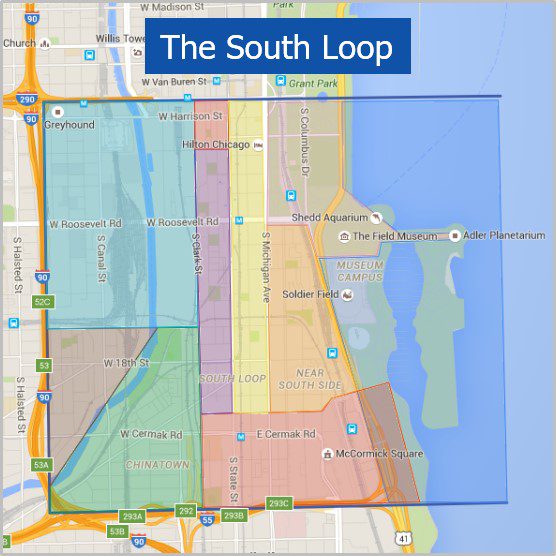
South Loop Statistics
- Size: Despite the fact that South Loop has no officially recognized boundaries, City-Data places its area at 2.308 square miles.
- Demographics
- Population: Nearly 100,000 people live in the 60607, 60605 and 60616 area codes. You will find a nearly even 50/50 split according to gender.
- Median Age of Population: 32
- Average Household Income: ~ $100,000 annually
- Median Household Income: ~ $67,000 annually
- Marital Status: 49% never married, 34% married. The rest are either separated, widowed or divorced.
- Median Income for Residents Aged 25-44: ~ $66,000 annually
Parks and Greenspace
The proximity of South Loop to natural areas, green spaces, and outdoor activities are one of the most attractive characteristics of the neighborhood. Choose one or two parks to visit when you come to South Loop to get a feel for what every day, yet still out of the ordinary, life is like here.
- Ping Tom Memorial Park: A 17-acre former railway yard with a kids’ playground, Chinese pagoda, pool, boat launch, boathouse, gym, baseball field, fieldhouse, kayak rentals, club rooms, fitness center, natural area and paths, and trails.
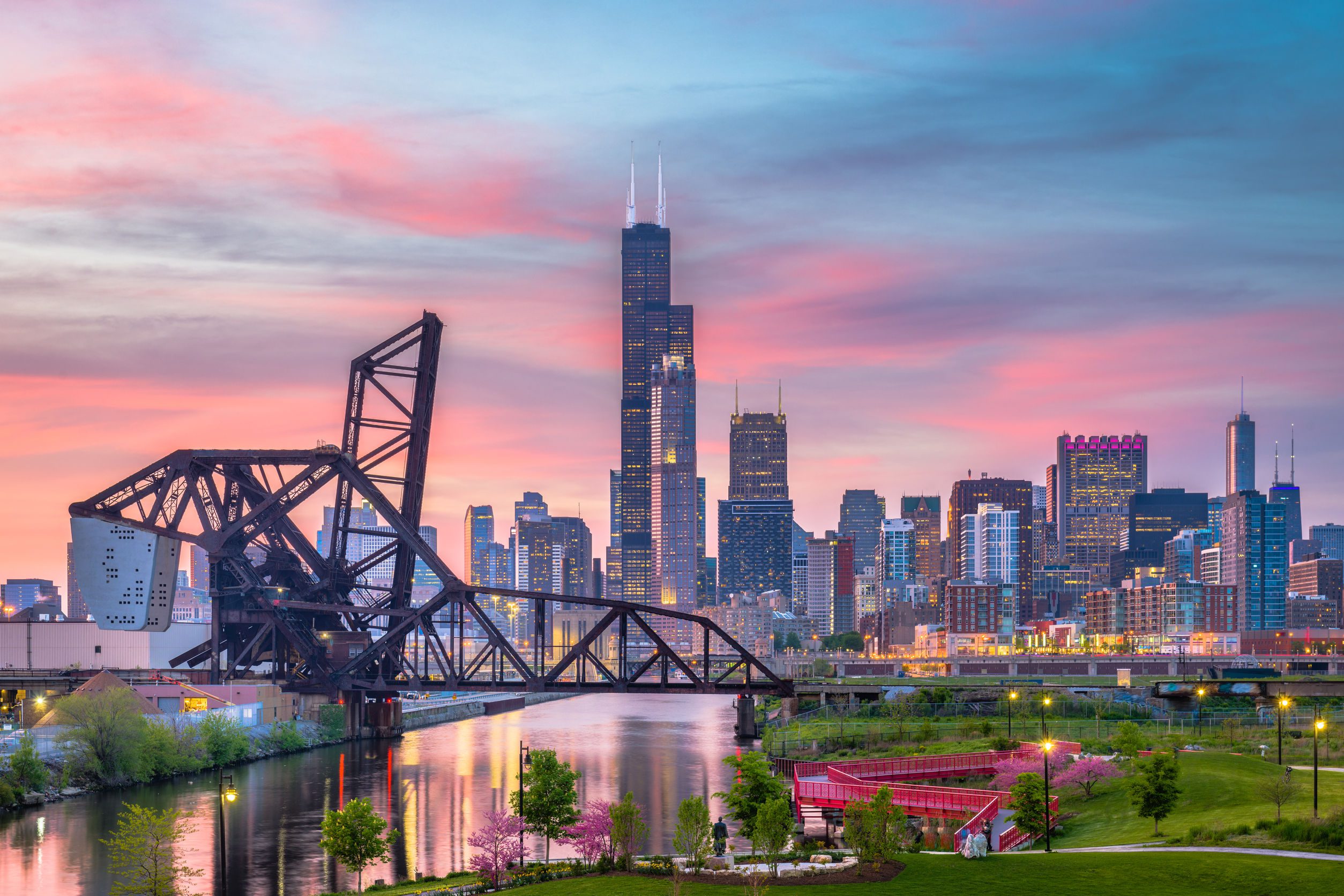
- Prairie District Park: A new (2017) children’s pocket park and playground in McCormick Square.
- The Battle of Fort Dearborn Park: A 1/2-acre green space that memorializes an 1812 massacre of Chicago settlers and the burning of Fort Dearborn.
- Chicago Women’s Park and Gardens: 2.51 acres of gardens with green space for rent for birthday parties, meetings, and events. A fieldhouse houses a kids’ club, fitness classes, summer camps, and kids’ science classes.
- Northerly Island: A 91-acre natural park on a peninsula jutting into Lake Michigan and including 12th Street Beach, Huntington Bank Pavilion, an outdoor amphitheater, and a visitor’s center. The Adler Planetarium is at the northern end.
- Mark Twain Park: Playground and dog run at 201-299 E. 15th Place.
- Gold Star Families Park and Memorial: A 5-acre lakefront park in Museum Campus with statues, sculptures and a memorial wall to remember Chicago police officers who have fallen in the line of duty since the CPD’s founding in the 1830s.
- Coliseum Park, Coliseum Park Dog-Friendly Area: Formerly Park No. 507, this park has a playground, a dog park, and a passive green recreation space.
- Anderson Park: Named after Chicago Jazz Legend, Fred Anderson, Anderson Park is a fully loaded dog park. It features separate, gated areas for both large and small dogs complete with artificial turf, play tunnels, and doggie water fountains. The park also has a performance area for local musicians flanked by benches and shade structures.
- Daniel Webster Park: A small, dog-friendly park between South Indiana and 14th Street with beautiful flowers, a fountain, and benches under an arbor. We hear it’s more protected from the wind than some other parks in the area.
- Roosevelt Park: Named for President Teddy Roosevelt, Roosevelt Park is a 1.6-acre park with open green space, two tennis courts and a track. Even though it’s not officially a dog park, neighbors say it’s the best dog park in South Loop. Four swings are there, including two for adults.
- Grant Park, Grant Bark Park: Grant Park is Chicago’s premier park. Known as “Chicago’s Front Yard,” it is home to 319 acres of public lands and historic landmarks and attractions like Museum Campus, the Art Institute of Chicago, Millennium Park, Maggie Daley Park and Buckingham Fountain. Baseball diamonds, tennis courts and a huge skateboarding park are available for traditional and extreme sport enthusiasts. Look for food and music festivals and other events here.

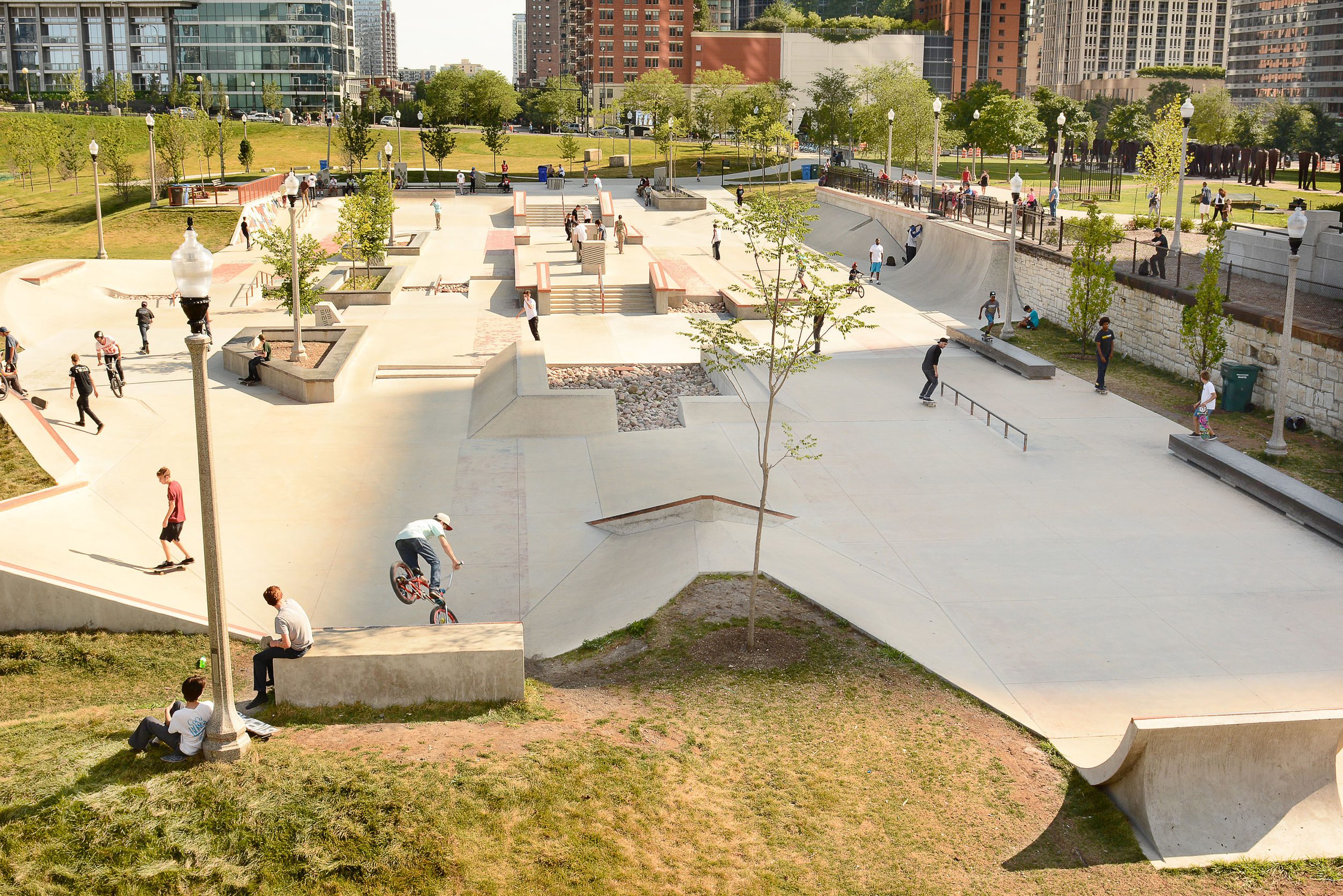
- Dearborn Park: Small park in Near South with playground, walking path, fitness course and green space. It hosts no programs but is a very active park.
- D’Angelo Dog Park: A small dog park at 438 S. Franklin St. that has dog fountains, doggie bags, and space to run.
If you’re not sure how to get to the South Loop parks, you can find information about transportation at www.transitchicago.com.
Neighborhood Associations
Universities
- Columbia College Chicago: Private, non-profit liberal arts college known for its up-and-coming film program and as the college Kanye West dropped out of.
- Roosevelt University: Co-ed, a private university known for its pharmacy school and the Mansfield Institute for Social Justice and Transformation (MISJT). It offers 125+ bachelor degrees and 40+ advanced degrees.
- Illinois Institute of Technology: Private, tech-focused research university offering degrees in the fields of science, engineering, law, architecture, business, design, human sciences, and applied tech. IIT is known as the alma mater of Marty Cooper, class of ‘50 and inventor of our favorite toy, the mobile phone. Who received his first call? Joel Engel, his competitor at AT&T’s Bell Labs.
- East-West University: Private, non-profit, non-denominational university offering two- and four-year degrees in areas such as biological sciences, computer, and information science, electronic and engineering technology, mathematics and others.
- Illinois College of Optometry: Optometry-only program that provides clinical experience and whose graduates always get good laughs because the jokes just get cornea and cornea.
Hospitals
- University of Illinois Hospital & Health Sciences
- Mercy Medical at Dearborn Station
- Mercy Hospital & Medical Center
Schools (K-12)
Chicago Public Schools governs the public school system in the South Loop. Their website is a helpful source of information regarding schools assigned to the property you are considering. Following is a list of public schools in each ZIP code of the South Loop:
- 60605 ZIP Code
- Jones HS
- South Loop Elementary (K-8)
- 60607 ZIP Code
- Chicago Virtual (K-12)
- Galileo (K-8)
- Jackson A (K-8)
- Skinner (K-6)
- STEM (K-8)
- 60616 ZIP Code
- Doolittle (K-8)
- Drake (K-8)
- Dunbar HS
- Graham HS
- Haines (K-8)
- 60608 ZIP Code
- Acero de las Casas (K-8)
- Acero Paz (K-8)
- Armour (K-8)
- Chalmers (K-8)
- Chicago Tech HS
- Chicago Tech HS
Plans are in the works to develop a new high school in South Loop by converting South Loop Elementary. The Board of Education has approved the changes, but there have been citizen opposition. Be on the lookout for more information.
To learn more about both public and private schools in the area, check out the neighborhood page, South Loop Living.
South Loop Amenities
Everybody’s got priorities. Yours might be a highway or CTA access, permit or free parking, dog friendliness or proximity to the lakefront trail, parks, and greenspace. Each neighborhood Hotspot Rentals serves is ranked by either zero, one, two or three stars to give you a feel for how closely that neighborhood meets the described need. The following amenities follow this rating system on the HotSpot Rentals neighborhood web page.
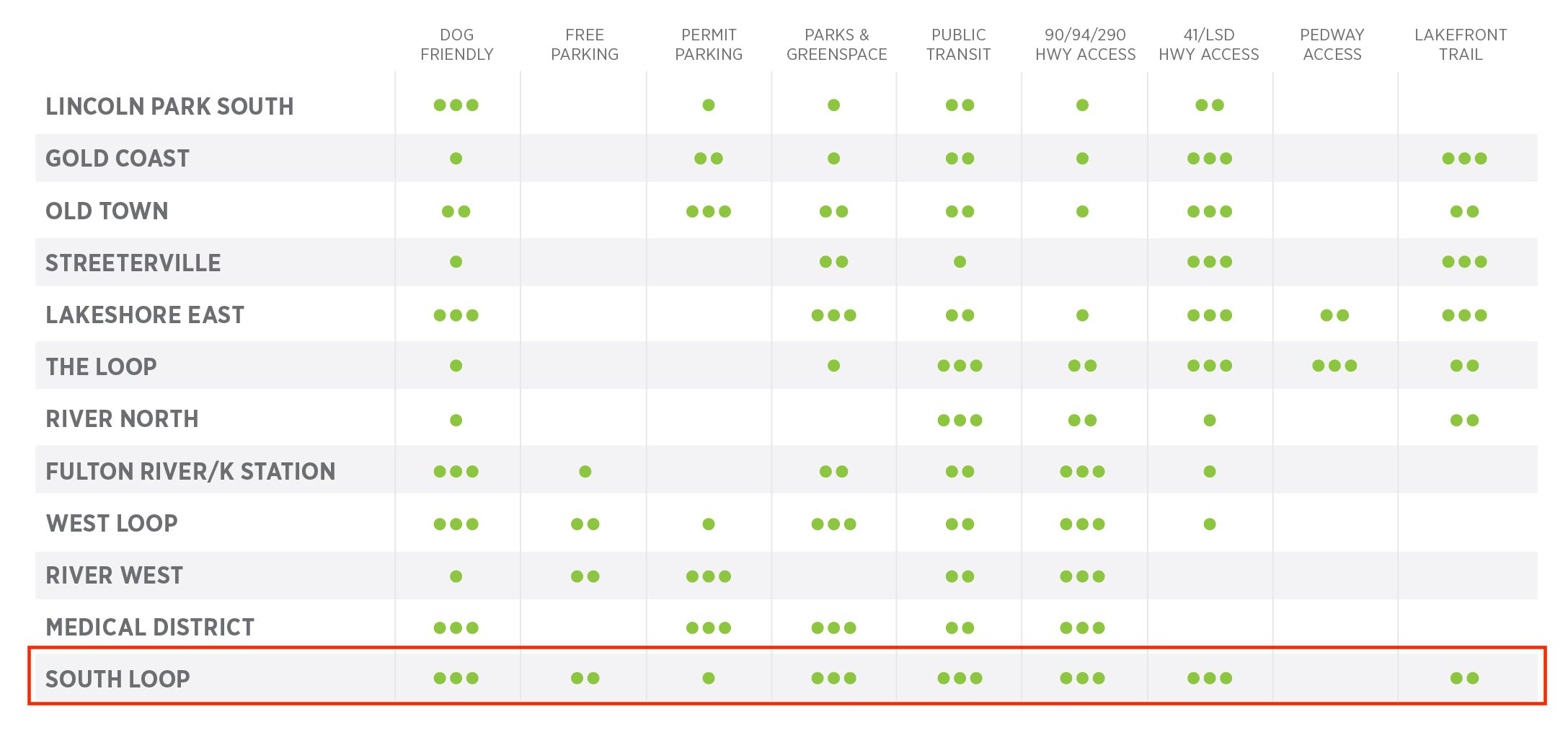
Dog Friendliness
If you’re looking not only for the right place for you but for your four-legged family, we’ve got you covered. South Loop is extremely dog-friendly due to its proximity to four dog parks: Grant Bark Park, Anderson Park, Coliseum Park Dog-Friendly Area, and D’Angelo Dog Park.
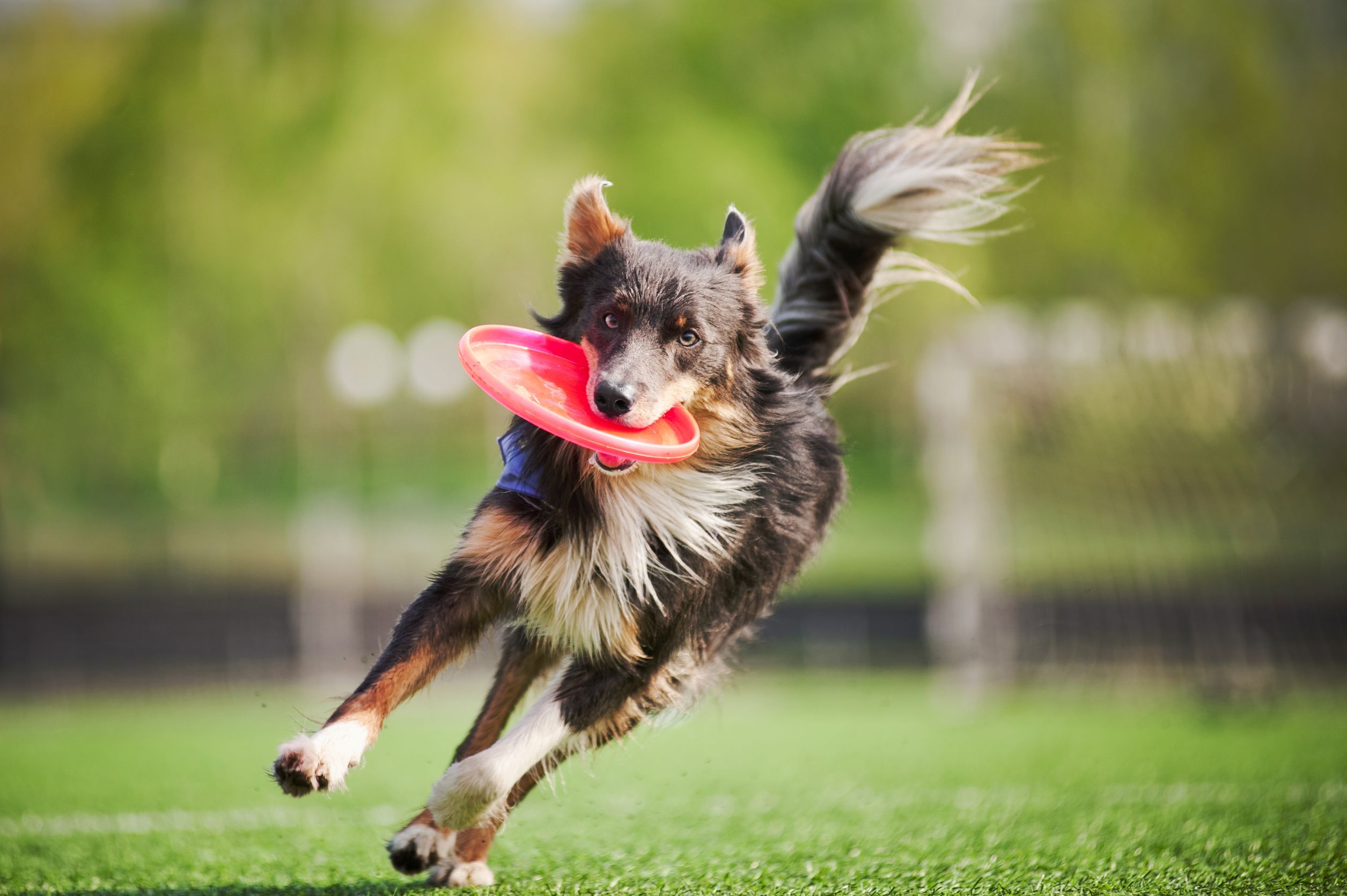
Parking
Options for South Loop parking include free parking, on-site parking, permit parking and permanent off-site parking. Most people prefer reliable on-site parking, which is offered by most condos and apartments for around $250/month. For those who prefer permanent off-site parking, SpotHero and Parking Spotter are great resources.
To get an idea of your options, you can use these and other available sites:
Be aware that if you park near Soldier Field when event parking restrictions are in place, you may receive a parking ticket. For more information concerning events at Soldier Field, please go to their website.
Highway Access
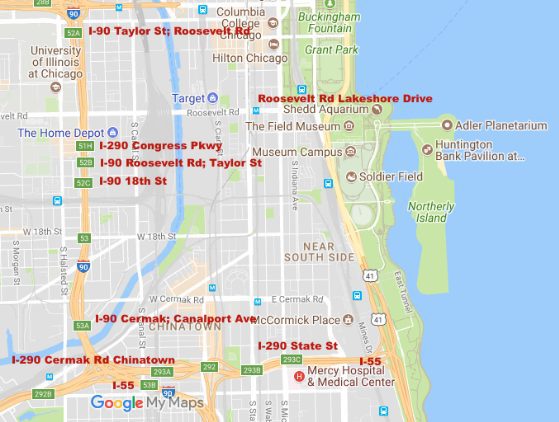
South Loop neighborhoods have access to U.S. Route 41 (Lakeshore Drive) and Interstates 90/94, 290 and 55.
Google maps is an easy and effective way to identify the on/off ramps and access points to these by neighborhood.
Public Transit
Commuting in and out of South Loop is easy using the red, green and orange CTA (Chicago Transit Authority) lines out of Harrison or Roosevelt Station. When you head home, you can take bus #146 (Inner Drive/Michigan Express), #3 (King Drive) or #4 (Cottage Grove). If you aren’t familiar with Chicago in general, the original city planners did a nice job of developing the city into a grid system, so bus lines typically run east/west and north/south without too much confusion.
Don’t forget, you also have the Metra. For those who don’t know, the Metra is the commuter rail system in the Chicago Metropolitan Area, which provides easy access to and from the suburbs.
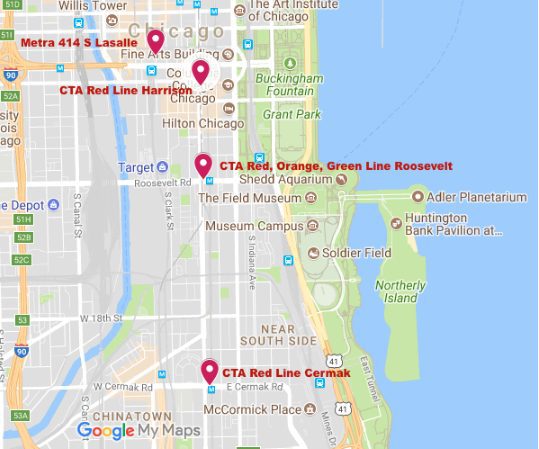
For comprehensive data on destinations and transportation options, it’s best to use the maps and schedules on the websites of CTA and Metra. Be aware that the advertised schedules provide an estimated time of when the trains, buses, and rail arrive and depart. To be more sure of CTA and Metra’s actual daily schedules, you can try several third-party apps that draw from their data.
You can also check the CTA and Metra websites for status updates and alerts. You can set up email alerts from Metra, and CTA will send you either email or text alerts.
Another option you have is to use Google Transit. Chicago O’Hare Airport Transit System (ATS), CTA and Metra participate in providing data to Google Transit. Here’s an example of the type of data you can get.
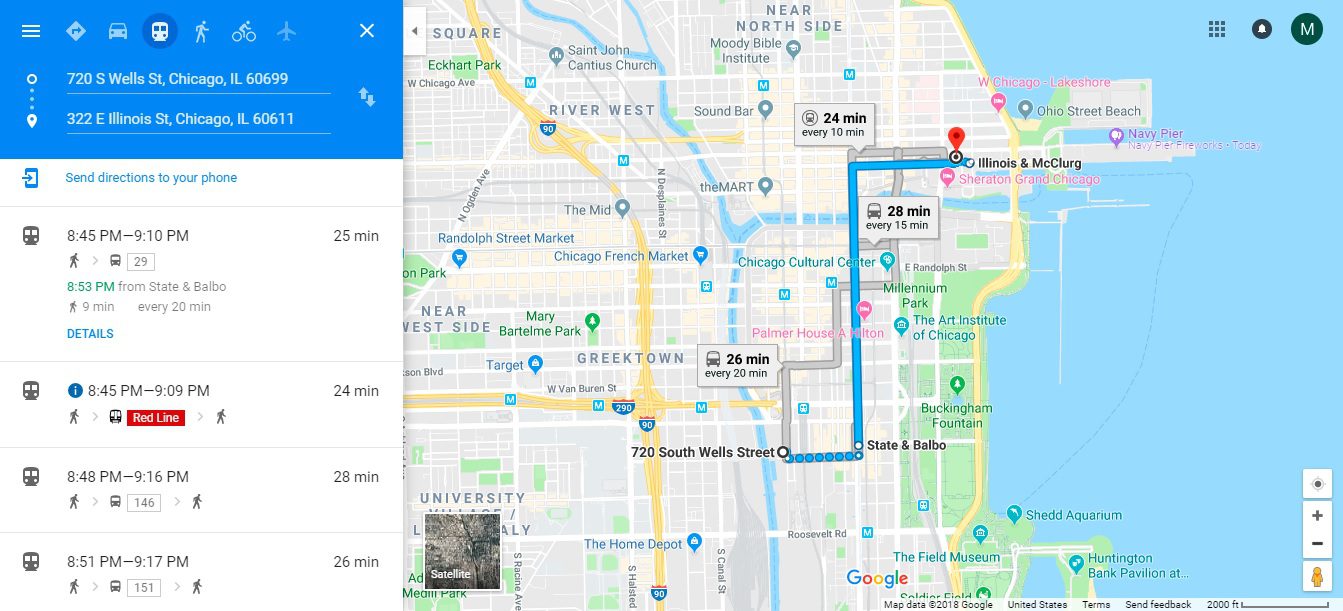
Let’s say you want to go from The Cooper at Southbank to meet friends at the AMC River East 21, north of the river. You enter the address for The Cooper in the top field and the address for the theater in the bottom field. Press “Get directions,” and it will show you exactly what options you have via public transit for getting there. If you decide you’d rather drive, just switch over to the car symbol above the address fields. You can even get a time estimate for riding your bike there!
You can also find complimentary services to public transportation, like Shoreline Water Taxis, Pace Suburban Bus Services or Zipcar. Metra provides a list of these services on their website.
South Loop Rental Properties
New rental properties are opening up all over downtown Chicago, and the past year was no different in the South Loop. More than 1,400 luxury apartment units hit the market between the Prairie District, traditional South Loop and the new Southbank area of the neighborhood.
Coeval: What makes Coeval unique is that it’s a mid-rise. At 16 stories and 261 units, the building maintains a sleek, low-key presence, but it definitely holds its own when compared with other high-rise additions to the South Loop. Here you have luxury amenity spaces designed with a sense of urban Zen. The building’s philosophy is to help make urban life relaxing. Floor plans include convertibles, one and two-bedrooms, as well as one-bedroom+flex and two-bedroom+flex options. Units offer hardwood flooring throughout, floor to ceiling windows, and upscale appliances including in-unit laundry.
Essex on the Park: Perched on the edge of Grant Park and completed in 2019, this luxury community boasts 56 stories and 479 units ranging from studios to 4 bedrooms. Each apartment home features plank flooring, an upgraded kitchen with stainless steel appliances and floor-to-ceiling windows. Residents enjoy the indoor/outdoor spaces with infinity pool & spa, expansive fitness center with Peloton bikes, and a 4-story winter garden oasis with unobstructed lake and park views.
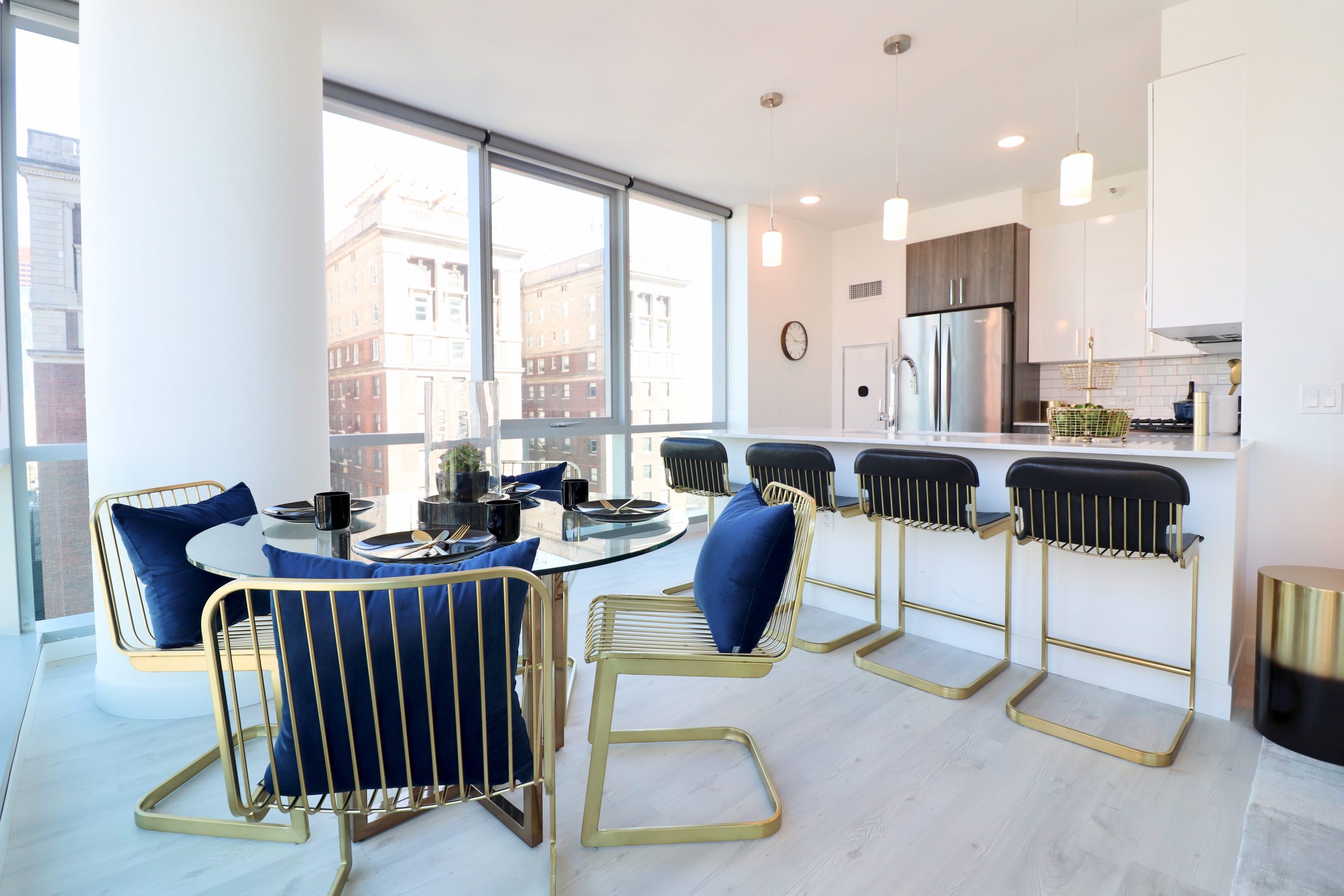
Nema: Also nestled on the south end of Grant Park and completed in 2019, this luxury high-rise stands at 76 stories, currently the tallest residential tower in Chicago. Offering 800 apartments that vary from studios to 4 bedrooms, and over 70,000 square feet of amenities, residents have access to a wide range of services and conveniences, such as a 75’ indoor lap pool, golf simulator, basketball and racquetball court, movie theater and sundeck.
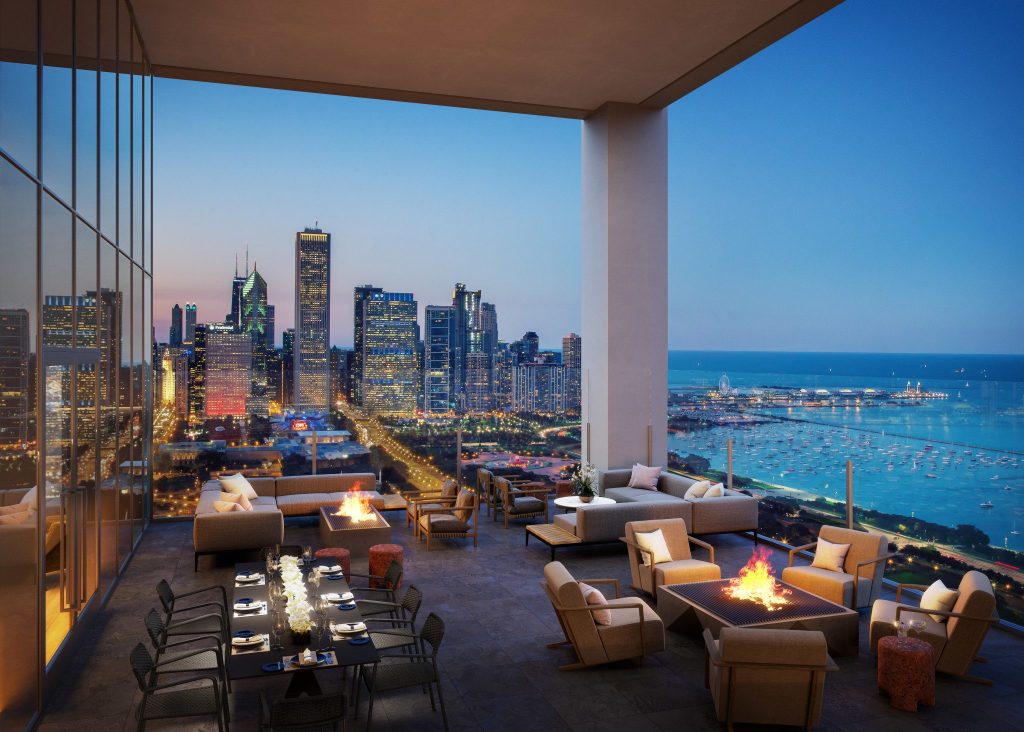
The Paragon: With 500 apartments spread across 47 stories, this luxury high-rise features studios to 3 bedroom apartments, with a deluxe amenity package for its residents. Amenities include a resort-style pool with cabanas, spa with sauna, steam, and whirlpool, rooftop Skydeck and fitness center. Each apartment home offers floor-to-ceiling windows, stainless steel appliances, ample closet spaces, and an in-unit washer and dryer. Opened in 2019.
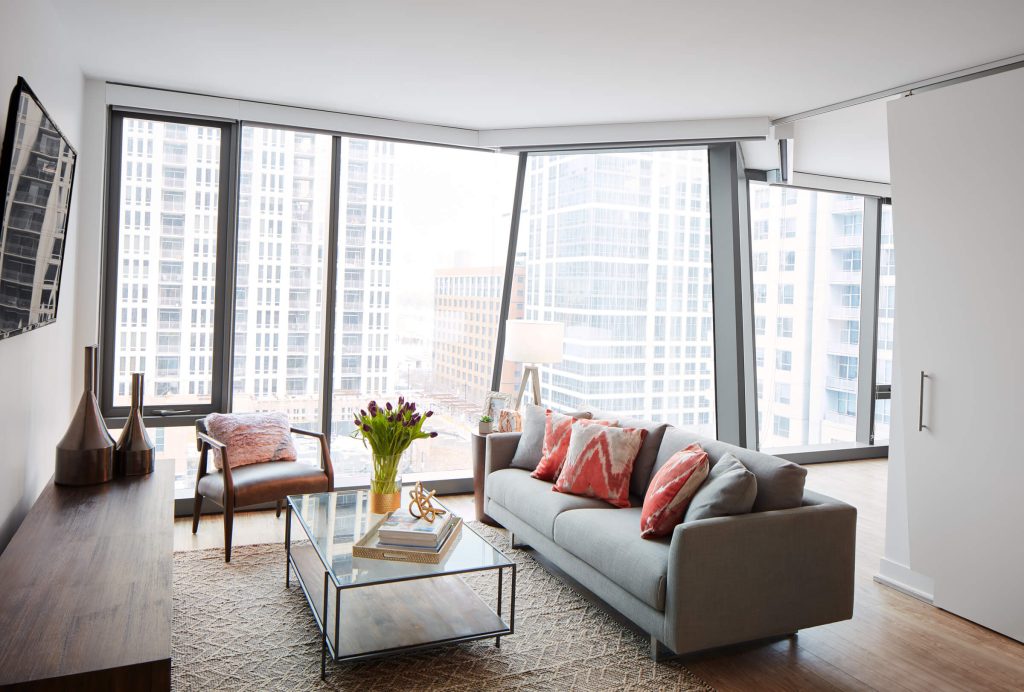
Imprint: This newest, luxury addition to Printer’s Row stands at 31 stories, offering 349 units ranging from studios to 4 bedroom units. This building offers a unit type for every lifestyle complete with hardwood flooring, floor to ceiling windows, and designer finishes throughout. The building offers multiple outdoor decks, fitness areas, and even has a library on the first floor!
Alta Grand Central: This new, riverside addition to the South Loop sports two, fourteen story towers offering 346 units ranging from studios to 3 bedroom floorplans. These bright, spacious, apartments provide great views of the city, and all the comfort of contemporary finishes and appliances. Residents here are treated to a versatile range of options, both indoor and outdoor, when it comes to relaxing, working out, or entertaining guests. There’s also a dog park complete with amazing dog spa. Built on the historic site of Chicago’s Grand Central Station, the building’s amenity spaces give a stylish nod to the location’s iconic past.
Looking for South Loop Apartments for Rent? We’ve got you covered! Check the most current selection of studio, one bedroom apartments, two bedroom apartments, and three bedroom apartments.
Coming Soon: New South Loop Rental Properties
- Aspire: Opens 2020
- Riverline Chicago: Opens 2021
Lakefront Trail Access
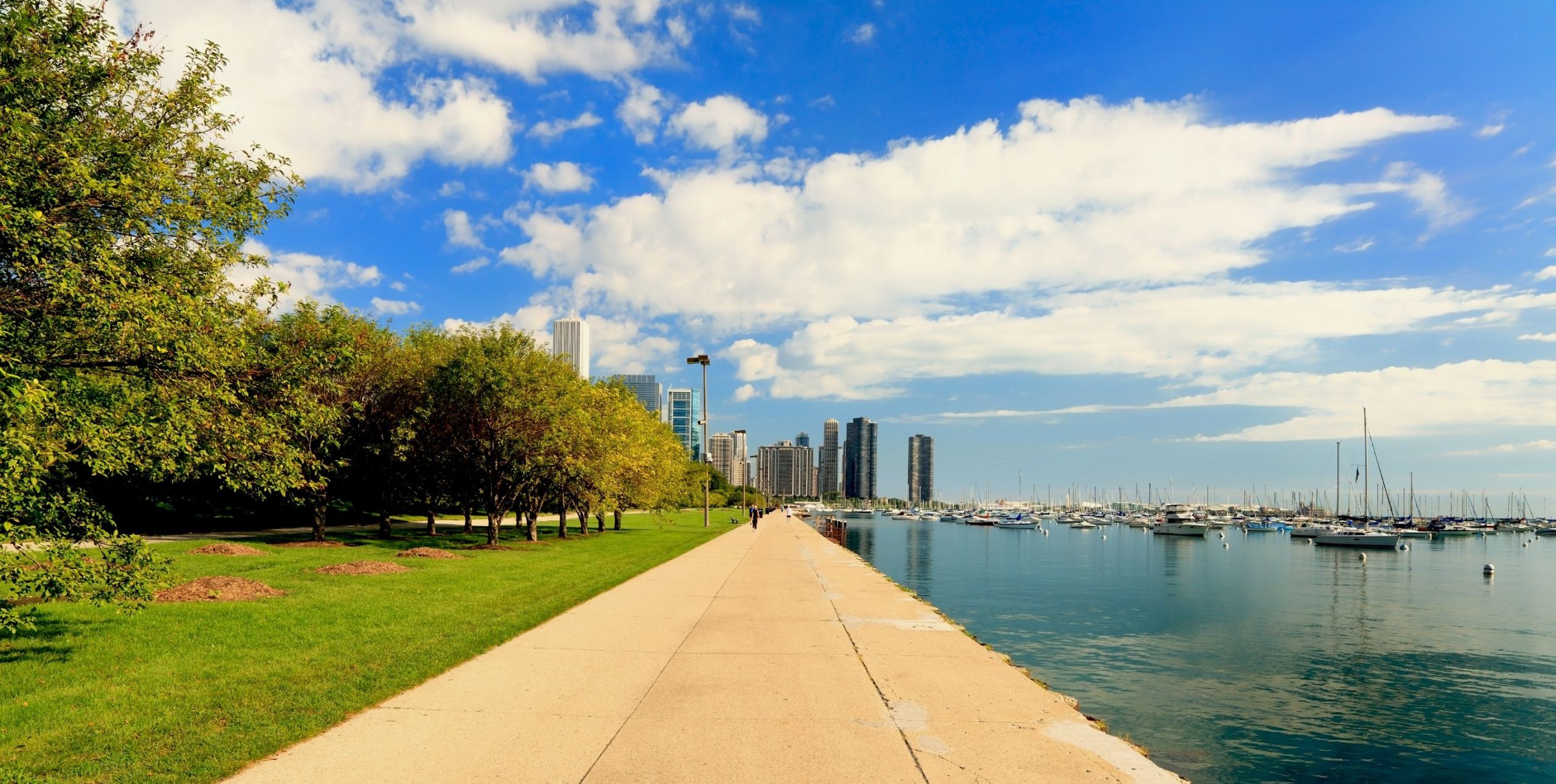
South Loop offers easy access to the Lakefront Trail. To plan your biking, strolling, skateboarding or jogging trip on the trail, you can access an online trail map. Note that in an effort to make the trail safer for bikers and walkers alike, the Chicago Park District is taking steps to divide the single trail into two trails, one for bikers and the other for walkers. As a result, construction is ongoing, and you should use caution. Alerts for construction areas are posted on the Chicago Park District website for the trail. Driving directions to the northern and southern access points can be found on Traillink.
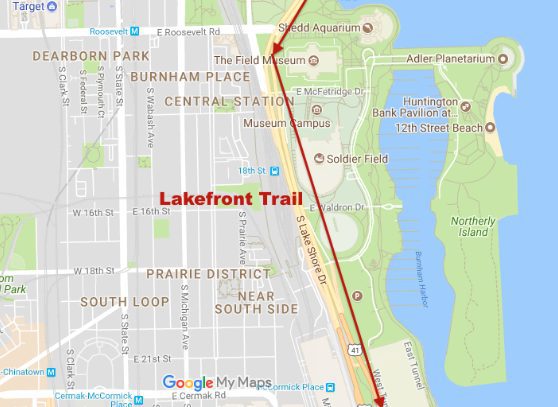
Top-Rated Restaurants
Since restaurants come and go in a big town, the simplest way to source fabulous food is to search the web. Aim for websites or apps that are reliable and that offer plenty of customer reviews to help you pick.
In order to find exactly what you want, you may want to search not only by “best restaurants in South Loop” but more specifically by either the time you want to eat or the type of food. For example, you can search Yelp by “Breakfast and Brunch” or “Takeout.” Searching by “Restaurants” will give you lunch and dinner info.
Here are a breakfast and brunch example.
Reliable Chicago restaurant review sites include not only Yelp but OpenTable, Eater Chicago, Foursquare.com, TimeOut Chicago, Thrillist, and the Michelin Guide. Once you find a restaurant that piques your interest, you can go directly to their website to check out a menu.
Bars and Nightlife
Like Chicago restaurants, bars and clubs come and go, so we want to help you help yourself to the best South Loop has to offer.
We’re pretty confident that Kasey’s Tavern, which has been around for over a century, will still be around in the distant future, so if you’re looking for a wide variety of beers and no dancing, this is your spot.
Otherwise, try the following Google searches for up-to-date information about bars, pubs, clubs, and nightlife in South Loop:
Don’t forget that there are several venues for concerts, live theater and other performances in South Loop. Check out each venue’s website for upcoming productions.
South Loop Living also posts events of various types by season and activity. As you can see, you would have to work very hard to run out of fun things to do in South Loop.
5 Great Things You Need to Know About The South Loop

In summary, South Loop is a simply awesome place to live. Here are five reasons you should seriously consider South Loop as your new Chicago neighborhood:
- Location, location, location: Easy access to tons of things to do like visit Museum Campus, Lake Michigan, the Chicago River, Grant Park and Huntington Bank Pavilion; proximity to CTA and Metra stops and hospitals; close to many options for restaurants, nightlife and more.
- History: South Loop has a rich history that has been lovingly and painstakingly preserved by the area’s developers. Make its history a part of your identity.
- Neighborliness: Despite its crazy growth, South Loop keeps a handle on its small-town, neighborly, eclectic and artsy vibe. Check out its eight micro-communities, all with a different culture and character, from Chinatown to Wabash Corridor. It’s also a great area to enjoy the arts and to be an artist.
- Opportunity: The fact that this area is booming – and will be for decades to come – presents opportunities for investment, employment and business for its residents. Considering that the median age of residents is 32 and that 49 percent of residents have never been married, it looks like there may be opportunities for romance in South Loop, too.
- Just plain FUN: No matter what kind of person you are – sporty, adventurous, bookish, a foodie, a roadie – you’ll find activities in South Loop that make you happy. Music lovers can rock out at the Pavilion, artists can enjoy inspiration in the Wabash Arts corridor, runners can find their high on the Lakefront Trail and sports fans can catch a game at Soldier Field.
In short, South Loop is a fantastic place to live, work, play, create, love and dream.
